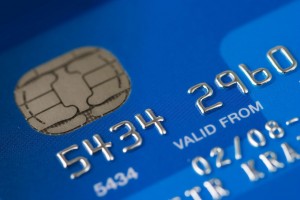 EMV technology, perhaps better known as ‘Chip and PIN card technology’, is seen as a major weapon in the fight against fraud. Authenticating your debit or credit card transactions through a computer chip rather than a magnetic stripe or signature has resulted in a huge reductions in fraud losses from stolen or counterfeit payment cards.
EMV technology, perhaps better known as ‘Chip and PIN card technology’, is seen as a major weapon in the fight against fraud. Authenticating your debit or credit card transactions through a computer chip rather than a magnetic stripe or signature has resulted in a huge reductions in fraud losses from stolen or counterfeit payment cards.
The United Kingdom adopted EMV technology in the early 2000s, and an estimated 99% of terminals in Europe are now chip-enabled to help reduce payment card and identity fraud. The United States has a deadline of October 2015 for its rollout of EMV, but what effect will this have on other types of fraud?
There is a noticeable pattern from countries that have adopted EMV experiencing a rise in card-not-present (CNP) fraud. Figures from the Smart Card Alliance illustrate how online payment fraud rose in the UK, and other countries, after adopting EMV technology. Why? Fraudsters follow opportunity and go for the ‘easiest’ win. As it becomes more difficult to use a stolen card in store, attention is being focused online.
eMarketer estimates that over $200 billion of additional spending could flow through CNP transactions globally by 2017, presenting a vast world of opportunity to online fraudsters who will adjust their tactics and targets for the CNP realm. The online shopping boom has already led to increased chargebacks that can cost businesses dearly and as one of the world’s leading economies joins the EMV revolution, we can expect the fight against online fraudsters to intensify.
It’s important to take these threats seriously rather than accept it as a cost of doing business. Fraudulent activity online can only be beaten when it is confronted, challenged and overcome.




